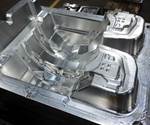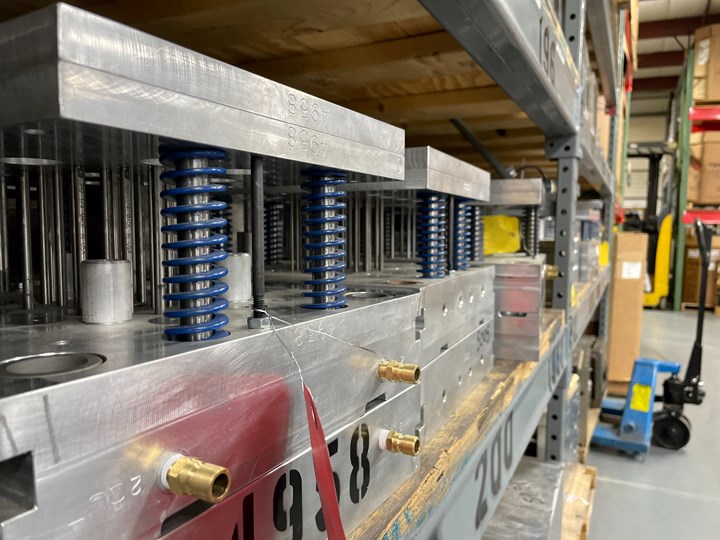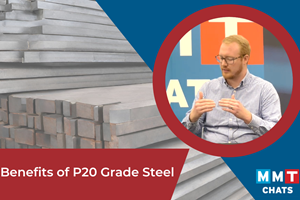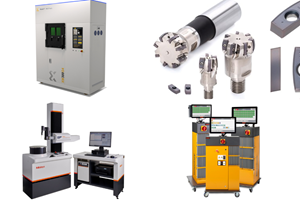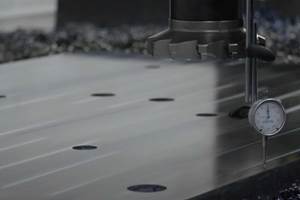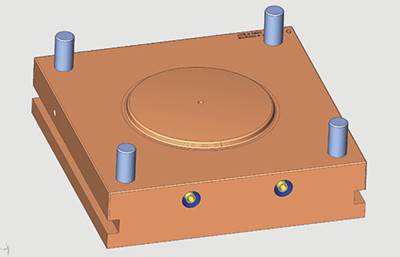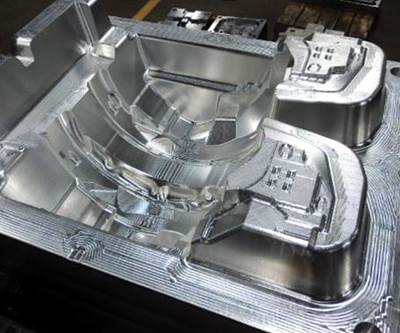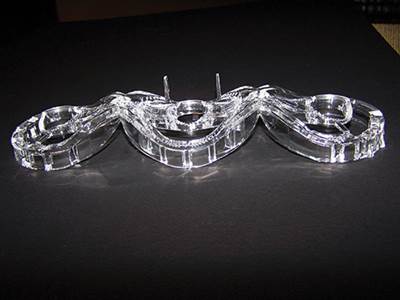No matter what mold material you choose, always consider part design, resin, part quantity, part geometry, mold builder, molder and industry-standard mold maintenance. Photo Credit: MoldMaking Technology
Aluminum as a mold material can support complex designs, tight tolerances, high aesthetic finishes, unfilled/filled resins and production volumes without compromising quality. The phrase “production quantities” is highly subjective and often used to imply that steel tooling is the only choice. The fact is that most projects’ production quantities can be accomplished easily by aluminum tooling.
Aluminum tooling is a low-cost alternative to steel tooling for lower production quantities up to 1 million shots. Case hardening can produce even higher quantities beyond 1 million. A multicavity tool can bring the production capacity to several million for certain plastic resins.
Today’s aluminum options are better than steel alloys for many mold projects, but you must do your homework. Review the following five reasons to consider aluminum tooling:
-
Design Validation
Education during the design phase when working with an aluminum prototype tool speeds up the final production tool build and part manufacturing. Using aluminum, you can consider complex designs and hard-to-fill resins to validate the final design concept.
-
Mold Cost Savings
Aluminum tooling will always be cheaper than steel tooling. While aluminum is pound-for-pound more expensive than steel, aluminum weighs less and is often less expensive. The major cost savings on an aluminum mold is realized through faster machining efficiencies and longer-lasting cutters because aluminum cuts faster and easier than steel and burns and polishes faster when EDM is necessary.
Aluminum also offers dimensional stability where heat deformation affects critical design tolerances, yielding greater success with complex designs.
-
Part Savings
Aluminum’s greater thermal conductivity makes processing easier and more consistent for each production run, which allows technicians a bigger process window for the best setup to validate the part for production. Faster process cycle times also increase profits and improve available capacity.
Because aluminum molds heat up and cool down faster than steel molds, faster mold setups can be achieved with less scrap for startup and shutdown. Lastly, lower injection pressure can often fill aluminum molds, yielding less machine and mold wear and electrical costs.
-
Part Quality
Aluminum’s natural thermal conductivity also reduces hot and cool spots in a mold, translating into a more stable part. The resin flow through an aluminum mold is normally faster and more consistent, producing a higher-quality part with less scrap.
To validate a new part design before it’s launched into production, consider aluminum because it enables technicians a larger process window even with very intricate and challenging parts. Aluminum also offers dimensional stability where heat deformation affects critical design tolerances, yielding greater success with complex designs.
-
Speed-to-Market
Too often, designs from OEMs take several weeks or months, with first-off part deliveries already behind schedule. Aluminum molds are built faster than steel molds, process more easily and bring a project to market quicker thanks to the material’s improved tensile strength, machinability, low weight, thermal conductivity, uniformed distribution of mechanical properties, electrical conductivity, dimensional stability and high wear resistance.
Related Content
Laser Welding Versus Micro Welding
The latest battle in finely detailed restoration/repair of mold materials.
Read MoreProject Reveals Added Benefits of New P20 Grade Steel in Machinability, Cycle Time and No Stress Relief
MoldMaking Technology's Christina Fuges talks with General Motors' Shane Appel about a project testing a new P20 steel grade's dimensional stability.
Read MoreProducts and Services for Multiple Moldmaking Needs
New year, new technology roundup! Featured here is a collection of product offerings, from profile milling cutters to industry-specific CAD/CAM software to innovative hot work tool steels.
Read MoreHow to Produce More Accurate Molds and Reduce Rework
Patented micro-milling process for manufacturing steel plate flat and parallel helps mold builders shorten mold build times and increase accuracy.
Read MoreRead Next
Let’s Be Clear About Aluminum
Within the injection molding industry, a negative perception of aluminum for anything but prototype plastic parts persists, despite aluminum tooling being able to produce and run almost any resin that steel can, as well as produce millions of shots with unfilled resin with uniform results.
Read MoreLessons Learned with Aluminum Tooling
Developing a team business plan and making changes to design, operation and maintenance procedures help increase the chances for a successful aluminum mold project.
Read MoreExpanding Aluminum’s Potential
Hard-coating provides a number of benefits that make aluminum tooling an attractive alternative to steel.
Read More


